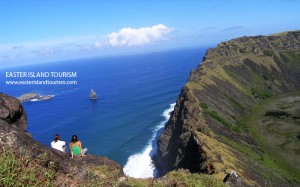The Park
The park makes up the whole surface of Easter Island. The main village is Hanga Roa, and it is located in the middle of the southern Pacific Ocean, 3,700 kilometers away from the Chilean coast. This makes the island the most isolated territory in the world. Easter Island (called Rapa Nui by the islanders) was declared a National Park and Historic Monument in 1935 with the purpose of protecting and preserving the archaeological treasures that have given the island a universal renown.

It has a surface of 6,666 hectares and a mild maritime warm climate, with rains throughout the year and subtropical characteristics.
The flora is defined by the only typical species: the toromiro, which is currently extinct in its natural form. These specimens can only be found in botanical gardens. Most of the island is covered by an herbaceous steppe conformed mainly of ferns. Some plant species are the hau, the makoi, the mahute, the ugaho, the ti. The forests are made up of imported species such as the eucalyptus, the miro Tahiti or paradise tree, the acacia and the cypress.
There are five species of land birds brought in from continental Chile. They are the common tiuque, the sparrow, the diuca finch, the partridge and the cock pigeon. Marine birds are of cultural and scientific interest as they are widely represented in archaeological objects. The most frequent figure is the makohe or frigate bird. Another very important bird in the islander culture is the manutara or sooty tern. The autochthonous land fauna is extremely scarce, although rodents are abundant.
The park’s main focus of attraction is the moai. A particularly interesting site is the ceremonial village of Orongo, center of the “bird-man” ritual. There are some beautiful beaches with fine sand that contrast with the hard geography of the island. Many nautical activities can be practiced in them, such as rowing, swimming and fishing.

